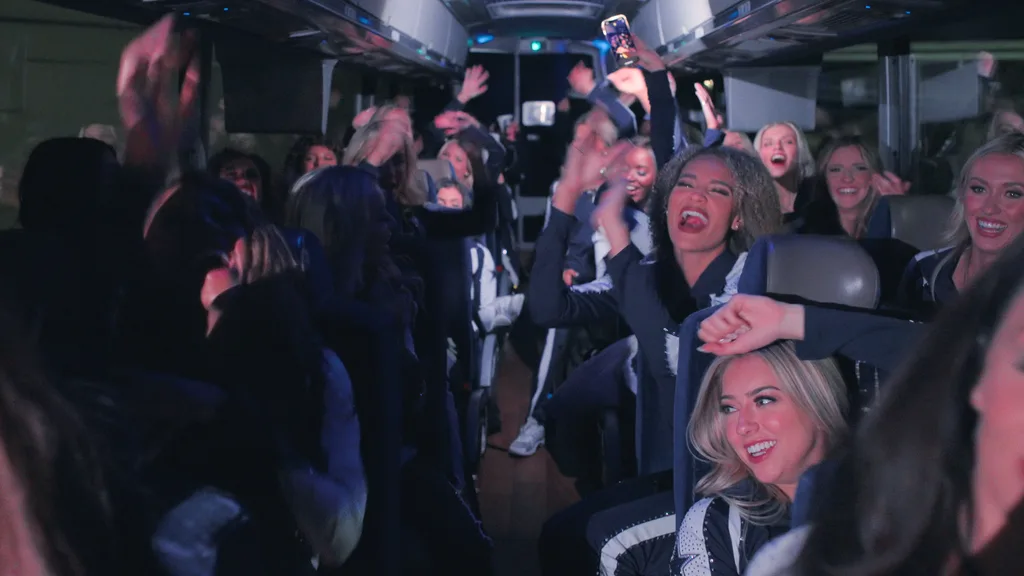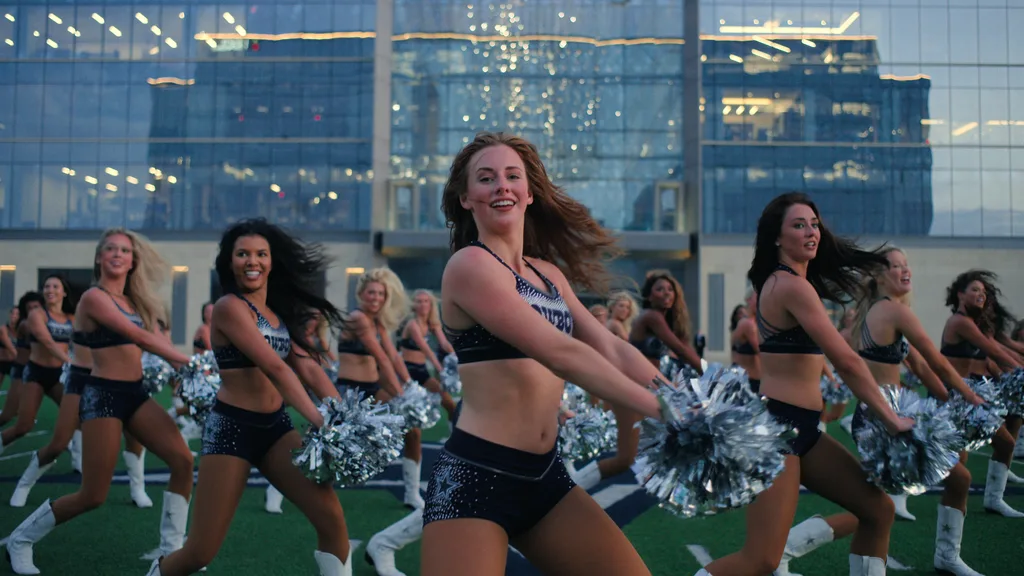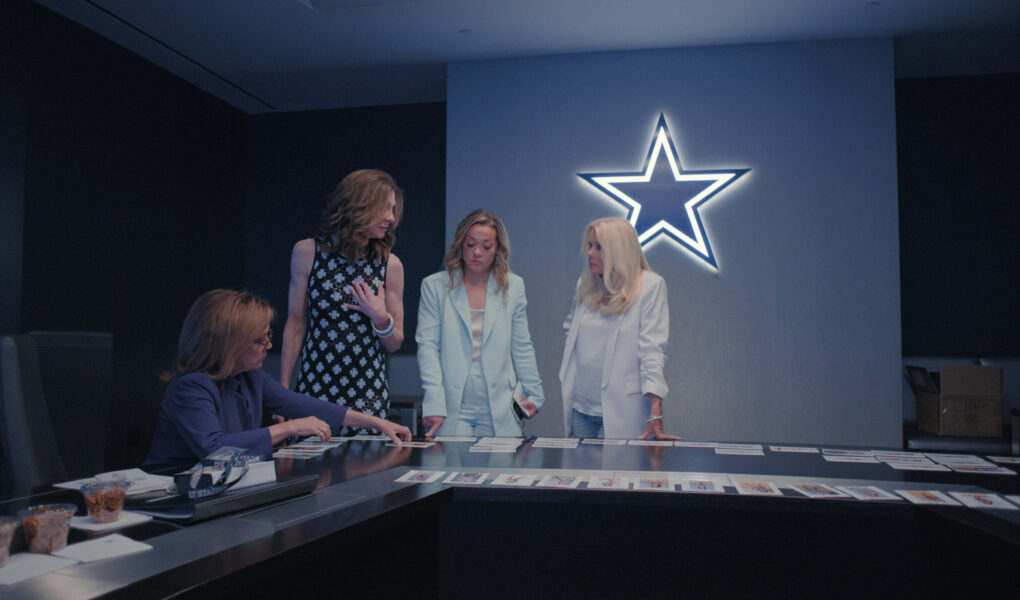Views: 95
While watching America’s Sweethearts: Dallas Cowboy Cheerleaders, I didn’t exactly think, wow, they’re just like me. As an Australian who couldn’t do a high kick or jump split to save my own life (which is to say nothing about my total lack of rhythm), the world of the DCC couldn’t be further removed from my reality. But as the second season of the Netflix show progressed, I realised they’re more like me than I originally gave them credit for. They’re a lot like all of us, actually.
This fact became clear in season two, when Amanda walked into a meeting with DCC director Kelli Finglass and head choreographer Judy Trammell, to discuss the possibility of a pay rise. “I do hope that one day we can get the cheerleaders paid more,” she said. “We work extremely hard and I think all of these girls would quit their full-time jobs in order to be Dallas Cowboys Cheerleaders.”
Related: This Is What Really Happened To Chandi In Season 2 Of DCC
As a viewer, this argument seemed obvious to me. In a program that demands perfection, the cheerleaders are simply asking to be paid a wage that allows them to focus fully on the job. As it currently stands, every Dallas Cowboy Cheerleader shown on the series has employment outside the organisation, with some even having up to four other jobs in order to afford to pay their rent and bills, and put food on the table.

Unfortunately, Amanda’s delicate ask was met with a brick wall. “Why do we want people to quit their full-time jobs, when that’s what’s so impressive about ya’ll?” Trammell asked.
Amanda continued. “We put ourselves under so much stress and our families under so much stress… If we could commit 100% to this…” she started, before Trammell cut her off. “We’ve been in the same boat,” she said, referring to her and Kelli’s experience as a DCC themselves. We’ve heard from Trammell that when she was a cheerleader, she still worked and had dinner on the table for her family before going to practice.
It’s a concept that women are used to hearing in the workplace. I would guess that there is no woman in the workforce today who hasn’t been on the receiving end of a, “well back in my day…” response from a superior after expressing a very reasonable grievance. Whether it’s the hours clocked, the volume of work delivered, or the ability to do it all with a smile on our faces, women are constantly held to impossibly high standards.

This was obvious from the moment season one of the Netflix series started. In the early episodes of the reality show, it was explained that the Dallas Cowboy Cheerleaders are more than just dancers who perform at football games to keep the crowd entertained (though, that’s impressive enough). Rather, they’re viewed as pillars of their communities, regularly performing at local and charity events, and held to an impossibly high standard as representatives of the most highly-valued NFL franchise in the US. (It’s estimated to be worth $10 billion USD.)
This expectation is likely similar to the men who play for the team, though the starting salary for a rookie Cowboys player is reportedly around the $30 million USD mark. Needless to say, they don’t need to work a second, third, or fourth job to make ends meet. And before you argue that they bring in the advertisers, the cheerleaders’ lucrative influencing careers are proof that they can bring in the dollars too. Likely this is why they were given a modest pay rise earlier this year.
The strict list of rules the women must adhere to while on the team is one obvious place to point when explaining exactly how high those standards are. Everything from who they date (dating a Cowboys player is strictly prohibited), to having visible tattoos, or chewing gum are regulated. But while those may, in theory, make sense for a workplace (not the tattoos, it’s 2025 after all), there are other rules that are a harder to swallow.
Dallas Cowboy Cheerleaders are expected to maintain a certain look. which is to say, they need to have a “squeaky clean” persona, and be “sexy” on game day, but buttoned up in between. “High heels, pantyhose, business suit, makeup and hair done, mannerly, good etiquette” are the exact words used by Presley Killmer, who was on the squad in the ’80s.

This expectation of always looking their “best” is underscored by the freebies they get as part of being on the team. Free cosmetic treatments, hair services, nails, tanning, the list goes on. As noted in the show, the organisation understands the pressure they put on the women, so these free services are designed to lighten the financial load. Just as one person on reddit noted, “Who needs food when you have free haircuts!”.
Another poster noted that they “always love when people from the 1960s compare their experience to 2025”. And this is the kicker for me. In 2025, women are expected to do it all, but that now includes working multiple jobs, keeping up a personal life, and upholding what society (or in this case, your employer) deems to be an appealing external image while doing it.
Which is a bitter pill to swallow when a group of women standing up and saying “that’s too much now” is met with what amounts to, “that’s how it’s always been, so deal with it”.
It reminds me of America Ferrera’s monologue in Barbie. “Always stand out and always be grateful. But never forget that the system is rigged. So find a way to acknowledge that but also always be grateful.”
The post The DCC Are Held To An Impossible Standard — That’s What Makes Them Relatable appeared first on ELLE.



